Abstract
Under conditions of a maximum security laboratory, four cross-bred sheep were inoculated intradermally only or intradermally and intratracheally with a West African isolate of sheep pox virus. All sheep had increased temperature and depression by the fourth or fifth day after infection. Nasal and lacrimal discharge and coughing occurred in all sheep but were more severe in sheep receiving the virus via the tracheal route. From the fifth day after infection, numerous papular erythematous skin lesions developed at the inoculation sites. These were 3-7 mm in diameter and gradually became nodular. Some of these lesions healed and others coalesced to form tumorlike masses. In one sheep, euthanized 14 days after intradermal and intratracheal inoculation, nodular lesions were found in the skin around the eyes, nostrils, oral and perianal regions, the mucosa of the rumen and throughout the lungs. Histologically, skin nodules were characterized by ischemic necrosis, vasculitis, microvesicualtion, eosinophilic cytoplasmic inclusions in the dermal epithelial cells and vacuolar nuclear degeneration. The pulmonary lesion was that of proliferative alveolitis with occasional cytoplasmic inclusions in the alveolar cells and macrophages. Ultrastructurally, large cuboidal virus particles were found both in the skin lesion and inoculated tissue cultures. The sheep pox virus structure was easily distinguished from contagious ecthyma virus, a parapoxvirus which causes sporadic disease in Canada. Serum neutralizing antibodies developed in all the sheep by 14 days postinfection.
The clinical and pathological characteristics of experimental sheep pox produced with this West African isolate were similar to those caused by Neethling virus of lumpy skin disease in cattle.
Keywords: Sheep, experimental pox, Capripoxvirus
Full text
PDF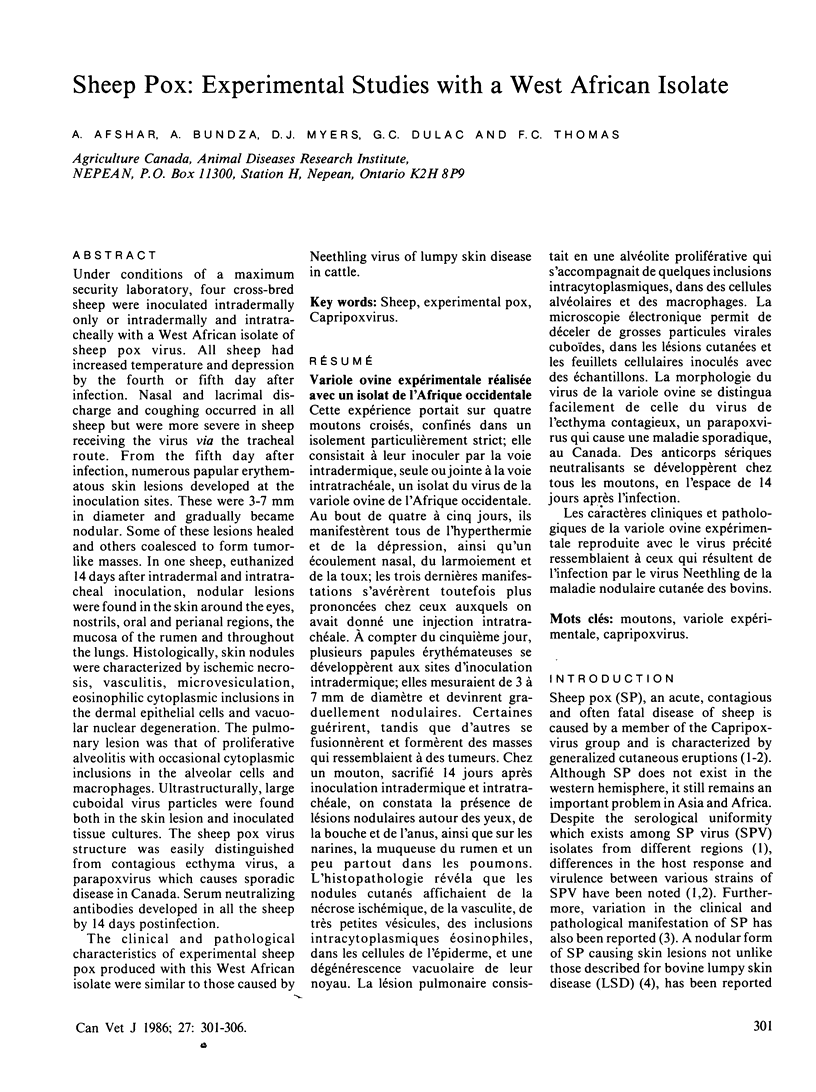
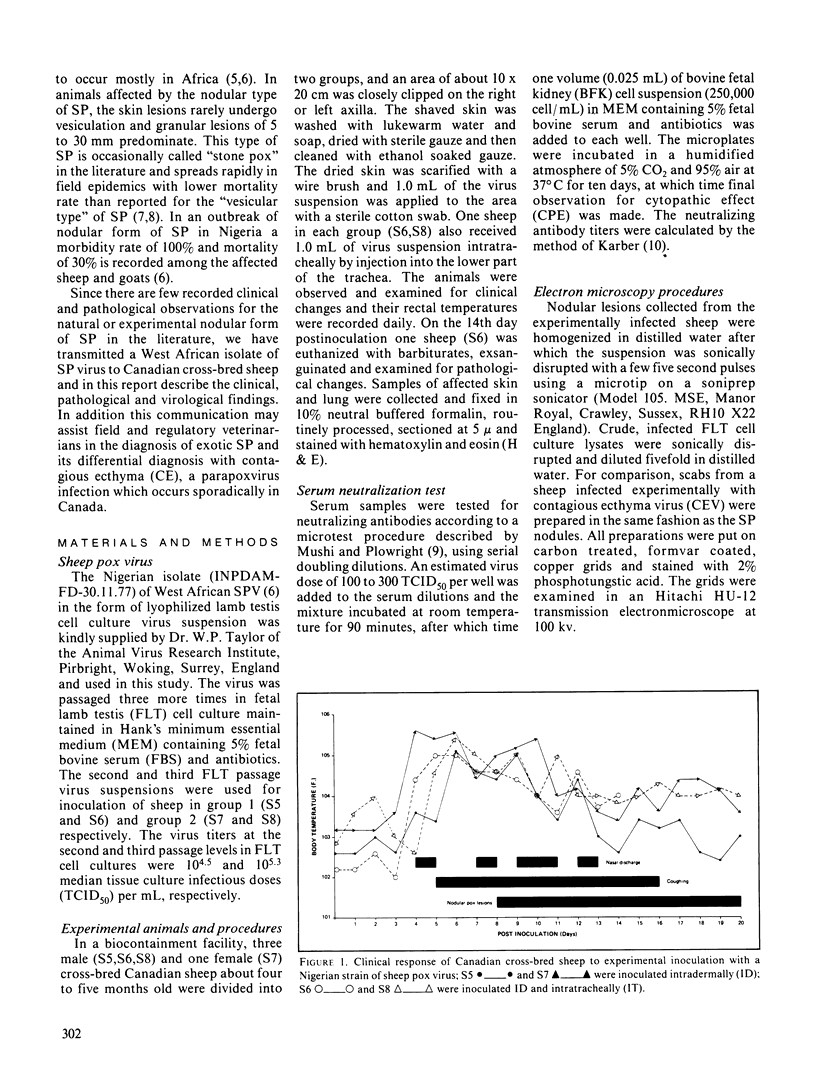
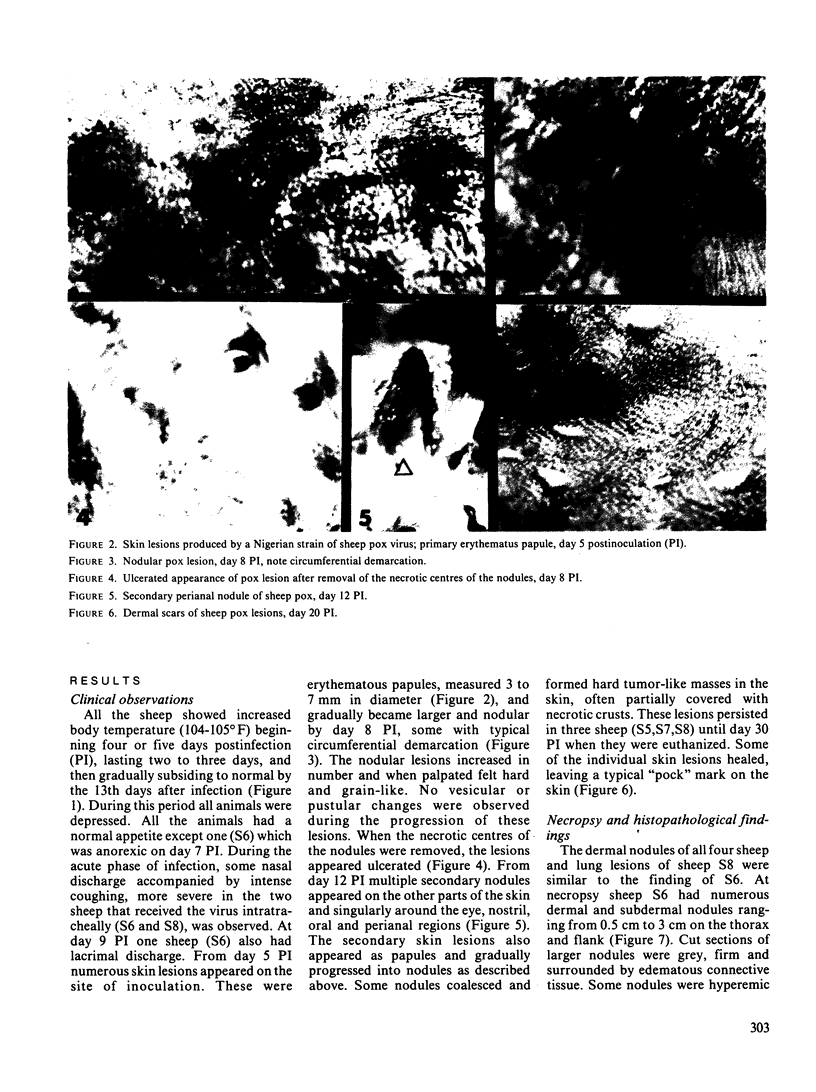
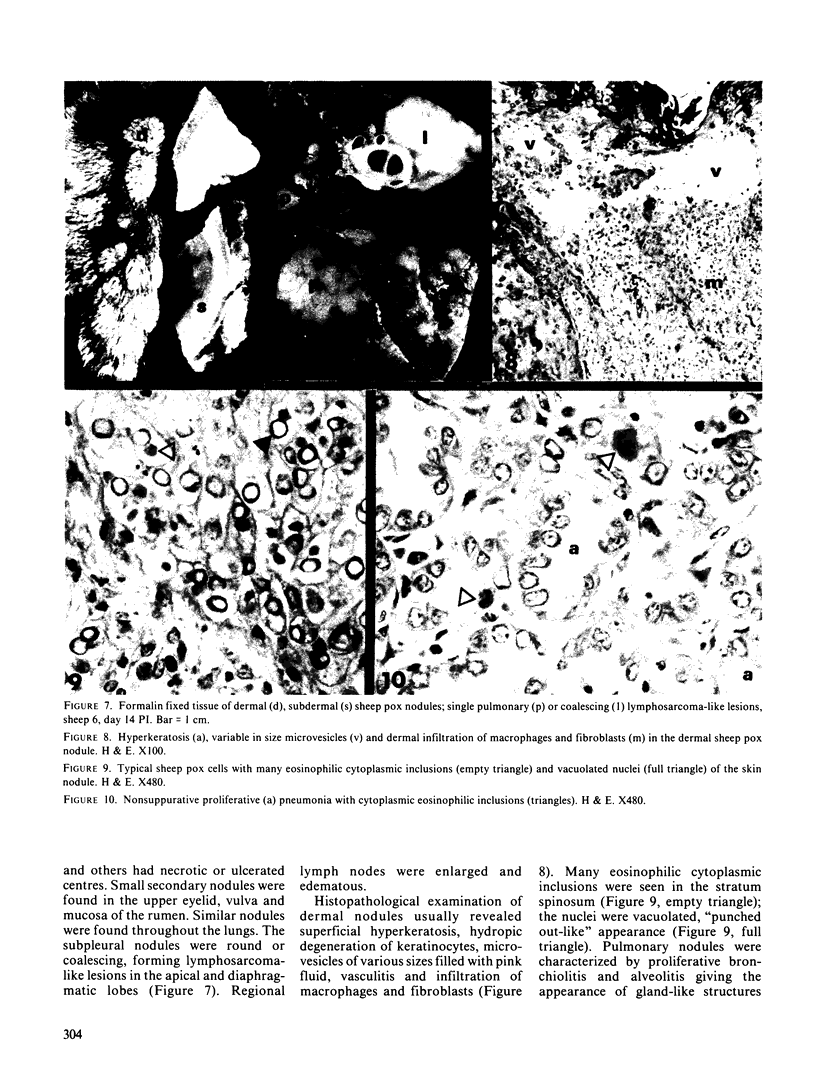
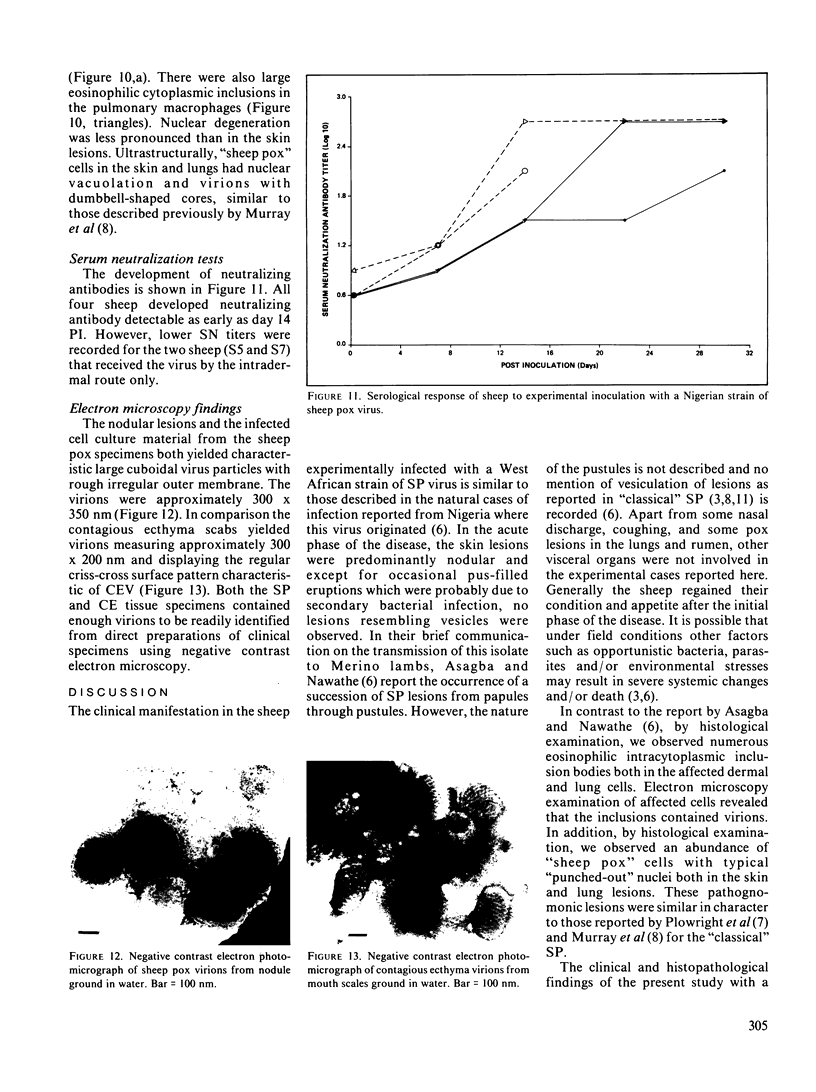
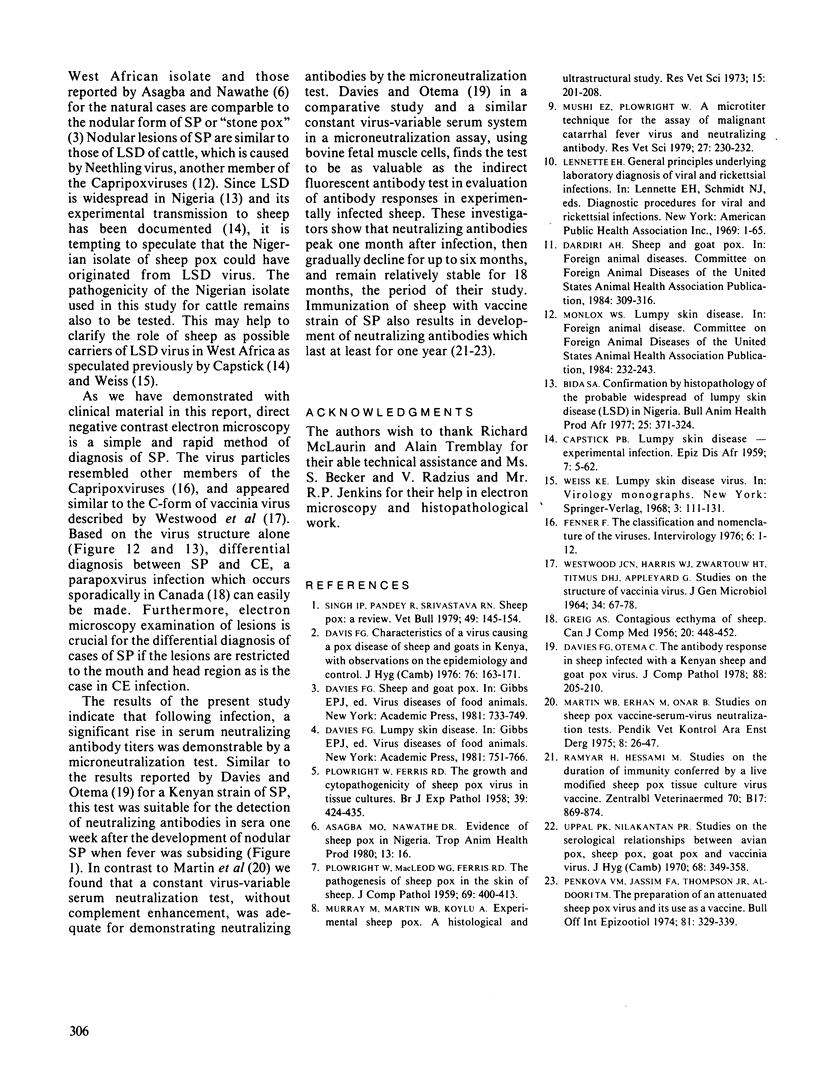
Images in this article
Selected References
These references are in PubMed. This may not be the complete list of references from this article.
- Davies F. G. Characteristics of a virus causing a pox disease in sheep and goats in Kenya, with observation on the epidemiology and control. J Hyg (Lond) 1976 Apr;76(2):163–171. doi: 10.1017/s0022172400055066. [DOI] [PMC free article] [PubMed] [Google Scholar]
- Davies F. G., Otema C. The antibody response in sheep infected with a Kenyan sheep and goat pox virus. J Comp Pathol. 1978 Apr;88(2):205–210. doi: 10.1016/0021-9975(78)90024-5. [DOI] [PubMed] [Google Scholar]
- Fenner F. The classification and nomenclature of viruses. Summary of results of meetings of the International Committee on Taxonomy of Viruses in Madrid, September 1975. Intervirology. 1975;6(1):1–12. doi: 10.1159/000149448. [DOI] [PubMed] [Google Scholar]
- Greig A. S. Contagious Echthyma of Sheep: I. Attempts to Infect Other Hosts. Can J Comp Med Vet Sci. 1956 Dec;20(12):448–452. [PMC free article] [PubMed] [Google Scholar]
- Murray M., Martin W. B., Köylü A. Experimental sheep pox. A histological and ultrastructural study. Res Vet Sci. 1973 Sep;15(2):201–208. [PubMed] [Google Scholar]
- Mushi E. Z., Plowright W. A microtitre technique for the assay of malignant catarrhal fever virus and neutralising antibody. Res Vet Sci. 1979 Sep;27(2):230–232. [PubMed] [Google Scholar]
- PLOWRIGHT W., FERRIS R. D. The growth and cytopathogenicity of sheep-pox virus in tissue cultures. Br J Exp Pathol. 1958 Aug;39(4):424–435. [PMC free article] [PubMed] [Google Scholar]
- PLOWRIGHT W., MACLEOD W. G., FERRIS R. D. The pathogenesis of sheep pox in the skin of sheep. J Comp Pathol. 1959 Oct;69:400–413. doi: 10.1016/s0368-1742(59)80039-4. [DOI] [PubMed] [Google Scholar]
- Uppal P. K., Nilakantan P. R. Studies on the serological relationships between avian pox, sheep pox, goat pox and vaccinia viruses. J Hyg (Lond) 1970 Sep;68(3):349–358. doi: 10.1017/s002217240004225x. [DOI] [PMC free article] [PubMed] [Google Scholar]
- WESTWOOD J. C., HARRIS W. J., ZWARTOUW H. T., TITMUSS D. H., APPLEYARD G. STUDIES ON THE STRUCTURE OF VACCINIA VIRUS. J Gen Microbiol. 1964 Jan;34:67–78. doi: 10.1099/00221287-34-1-67. [DOI] [PubMed] [Google Scholar]






